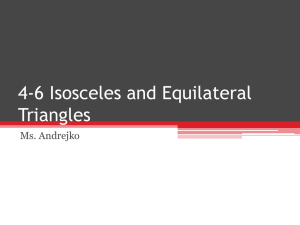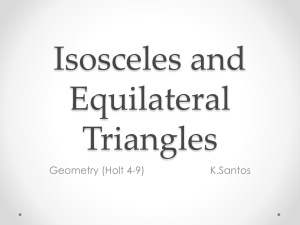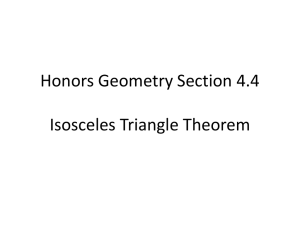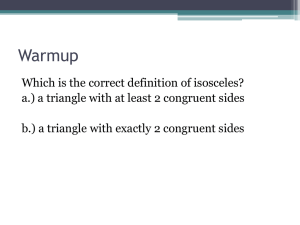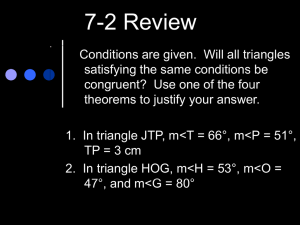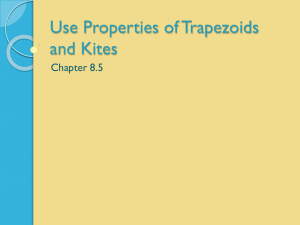Use isosceles and equilateral triangles
advertisement
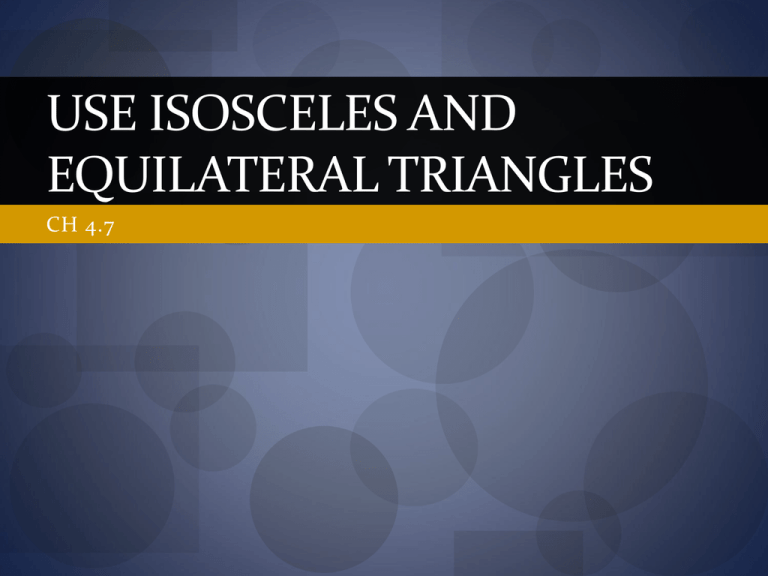
USE ISOSCELES AND EQUILATERAL TRIANGLES CH 4.7 In this section… We will use the facts that we know about isosceles and equilateral triangles to solve for missing sides or angles. What do you know about an isosceles triangle? There are two congruent sides in an isosceles triangle and two congruent angles. What do you remember about an equilateral triangle? All of the sides and angles should be congruent. The angles in an equilateral triangle always equal 60o. Base Angles Theorem If two sides of a triangle are congruent, then the base angles are also congruent. Base angles are the angles at the ends of the 2 congruent segments. So, in the diagram angles B and C are congruent. Base angle Base angle Converse to the Base Angles Theorem If two angles in a triangle are congruent, then the triangle is an isosceles triangle. That means that the 2 sides of the triangles are also congruent. Find the value of x. This is an isosceles triangle, so the 2 sides are congruent… 5x + 5 = 35 5x = 30 x =6 This is an isosceles triangle, so the 2 angles are congruent… 9x = 72 x=8 x + x + 102 = 180 2x + 102 = 180 2x = 78 x = 39 The sum of the interior angles is 180… 55 + 55 + y = 180 110 + y = 180 y = 170 x + 7 = 55 x = 48 If this is an isosceles triangle then what are the two congruent angles x = 45 9y = 45 y=5 How would you find the values of x and y? What are all of the missing angles? Page 267, #3 – 6, 14 - 22

